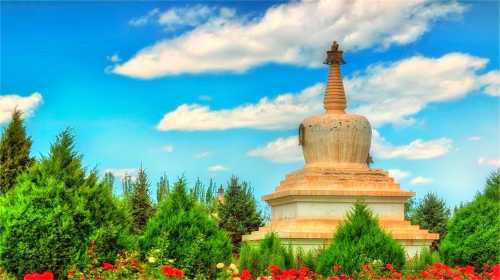Popular Trip Moments
Do you dare to step on the accelerator and go deep into the desert? | Help! This underrated city in Gansu is so beautiful, I want to settle down here! | Qinghai-Gansu Grand Loop Route Selection Guide, This Guide is Super Practical | Seize the last bit of the May Day holiday! Let's go to the niche city of Wuwei! | A dream come true: Sleeping on clouds at Hampton by Hilton Wuwei Liangzhou | May Day off-season travel destinations | Don't Know Where to Go for the May Day Holiday? Save This Amazing 2-Day Lanzhou Route | [Journey Through the Millennia-Old Silk Road | 3-Day Wuwei Travel Guide] — Gansu Wuwei | Qilian Mountains: A Hidden Paradise on Earth | Wuwei: A Great Place to Stay and Play, Xinglong is a Must-See! | How to play in Lanzhou? You must go to this beautiful route | Gansu Baita Temple | Kumarajiva Temple | Trip to Wuwei, China 🇨🇳 | 7-Day Lanzhou Itinerary: Check All the Hot Spots | When you stand at the Wushaoling Mountain Pass, can you feel the vastness of the Han Dynasty? | Langham Oriental Hotel Wuwei: A Hidden Gem, Highly Recommended!!! | May Day Anti-Crowds Travel Guide: 5 Hidden Gems | Explore Tianzhu Tibetan Autonomous County and embark on a soul-stirring journey. | When you come to Wuwei, you must visit the Tianti Mountain Grottoes! It's so beautiful! | Wuwei/The wind on the mountaintop is the roar of warriors | I found a very pleasant homestay in Wuwei | Exploring the secrets of Gansu: Haizang Temple, a quiet journey through thousands of years | I have been to Maya Snow Mountain 888 times, and I have compiled a guide for you to avoid pitfalls | Cherry Blossom 🌸 trip to Wuwei | Wuwei, the hometown of the Bronze Running Horse | Real encounter with the Deer | Discover Mati Temple (Cave of the Thousand Buddhas) | Winter Vacation Trip to Lanzhou-Xining-Qinghai Lake Guide | A diary of a solo trip to the Hexi Corridor during the off-season
Recommended Attractions at Popular Destinations
Bangkok attraction near me | Manila attraction near me | Tokyo attraction near me | Taipei attraction near me | Hong Kong attraction near me | Seoul attraction near me | Kuala Lumpur attraction near me | Los Angeles attraction near me | Shanghai attraction near me | New York attraction near me | Shenzhen attraction near me | Osaka attraction near me | Singapore attraction near me | London attraction near me | Guangzhou attraction near me | San Francisco attraction near me | Beijing attraction near me | Macau attraction near me | Bali attraction near me | Jakarta attraction near me | Paris attraction near me | Ho Chi Minh City attraction near me | Istanbul attraction near me | Phuket attraction near me | Chicago attraction near me | Seattle attraction near me | Toronto attraction near me | Orlando attraction near me | Cebu attraction near me | Chiang Mai attraction near me
Popular Attractions
Liuhe Night Market | Dazu Rock Carvings | Xi'an Bell Tower | Universal Studios Singapore | Sunset Cruise Langkawi | Mount Fuji | Sumtseling Monestery | Furong Cave | Wu Gate | Burj Khalifa | Shanghai Museum of Glass | Disneyland Paris | Wuhou Shrine | Chengdu Research Base of Giant Panda Breeding | Diver Ni Madhi Beach | Wellington Cable Car | Li River Cruise | Saigon Central Post Office | Zhuhai Shijingshan Tourist Cableway | Derevnya Kamenotesov | Şehit Polis Kamil Aslan Parkı | Sawah Banda Langik | Moriso Park | St Alban's Catholic Church, North Finchley | Stadion Mini Yogyakarta | Elbow Lake | Follansbee Park | Memanbetsu Golf Corse | Danstrup Hegn P-plads | SHIBUYA SKY
Popular Restaurants in Wuwei
周记三套车·甘肃名小吃 | 汉明海鲜自助火锅(北关店) | 老王家菜锅子(西关店) | 武威金穗大酒店·百姓厨房(黄羊店) | 兄弟烤坊(九中店) | 必胜客(天丰店) | 签上百味串串吧 | Dingruixuanjingpinshuan | BAO LIN NIU ROU CHAO MIAN PIAN BEI GUAN DIAN | YI NING ZHAI JING PIN SHUAN | 食为天家味鲜(南关店) | 马路边边(古浪街店) | 晋茶火锅店 | 金海盛宴 | 新疆大胡子烤肉城共和街总店 | 不一样砂锅面(明清街店) | 老回民·精品自助火锅烧烤 | 牛少爷牛肉炒面片(凉州旗舰店) | Yiningzhaimingdian | 年三十饺子楼(海藏路店) | Heisankaoroucheng | 金大碗牛肉面(浙大店) | Chongqing Chicken Hot Pot | 德克士(步行街店) | 祥和饭庄(杨府街店) | 老王三套车 | 云翔国际酒店·餐厅 | 汉明酒楼 | He Jixing Mian • Three sets of cars | 武威金玺国际酒店(市医院星光购物广场店)·自助早餐厅
Popular Ranked Lists
Popular Luxury Hotels Near Sicily | Top 20 Local Restaurants in Huangshan | Popular Luxury Hotels Near Nord-Pas-de-Calais | Popular Best Things to Do in Kyogoku | Top 19 Local Restaurants in Luoyang | Popular Local Restaurants in Bangkok | Popular Best Things to Do in Saint-Paul-De-Vence | Popular Luxury Hotels Near Lezhe | Popular Best Things to Do in Bandar Penawar | Top 10 Local Restaurants in Cairns | Popular Best Things to Do in Mimaropa | Top 20 Local Restaurants in Nanchang | Popular Luxury Hotels Near Copperbelt | Popular Luxury Hotels Near Ha Tinh Province | Popular Best Things to Do in Nagano | Popular Luxury Hotels Near Punjab | Popular Best Things to Do in Cordillera Administrative Region | Top 15 Local Restaurants in Narita | Popular Luxury Hotels Near Castilla-La Mancha | Popular Best Things to Do in Nisava District | Top 10 Local Restaurants in Riyadh | Popular Luxury Hotels Near Cat Spring | Popular Luxury Hotels Near Zadar County | Popular Luxury Hotels Near Massachusetts | Top 12 Local Restaurants in Lanzhou | Popular Luxury Hotels Near Pennsylvania | Top 9 Local Restaurants in New Delhi | Top 10 Local Restaurants in Cusco | Popular Best Things to Do in Central Macedonia | Popular Luxury Hotels Near Kromberk
Payment Methods
Our Partners
Copyright © 2025 Trip.com Travel Singapore Pte. Ltd. All rights reserved
Site Operator: Trip.com Travel Singapore Pte. Ltd.
Site Operator: Trip.com Travel Singapore Pte. Ltd.










